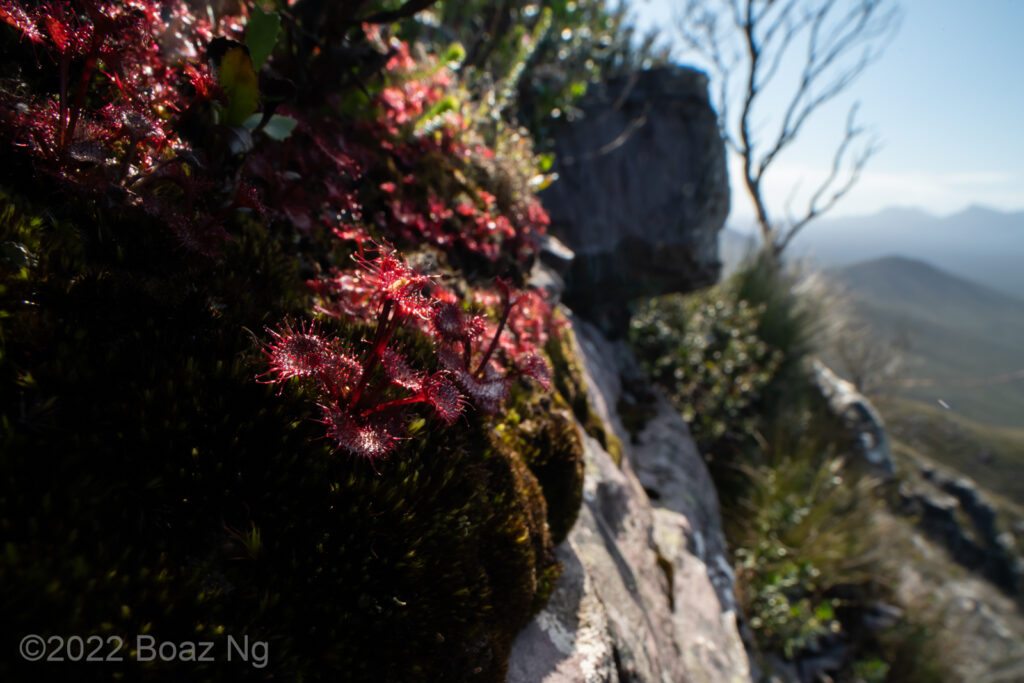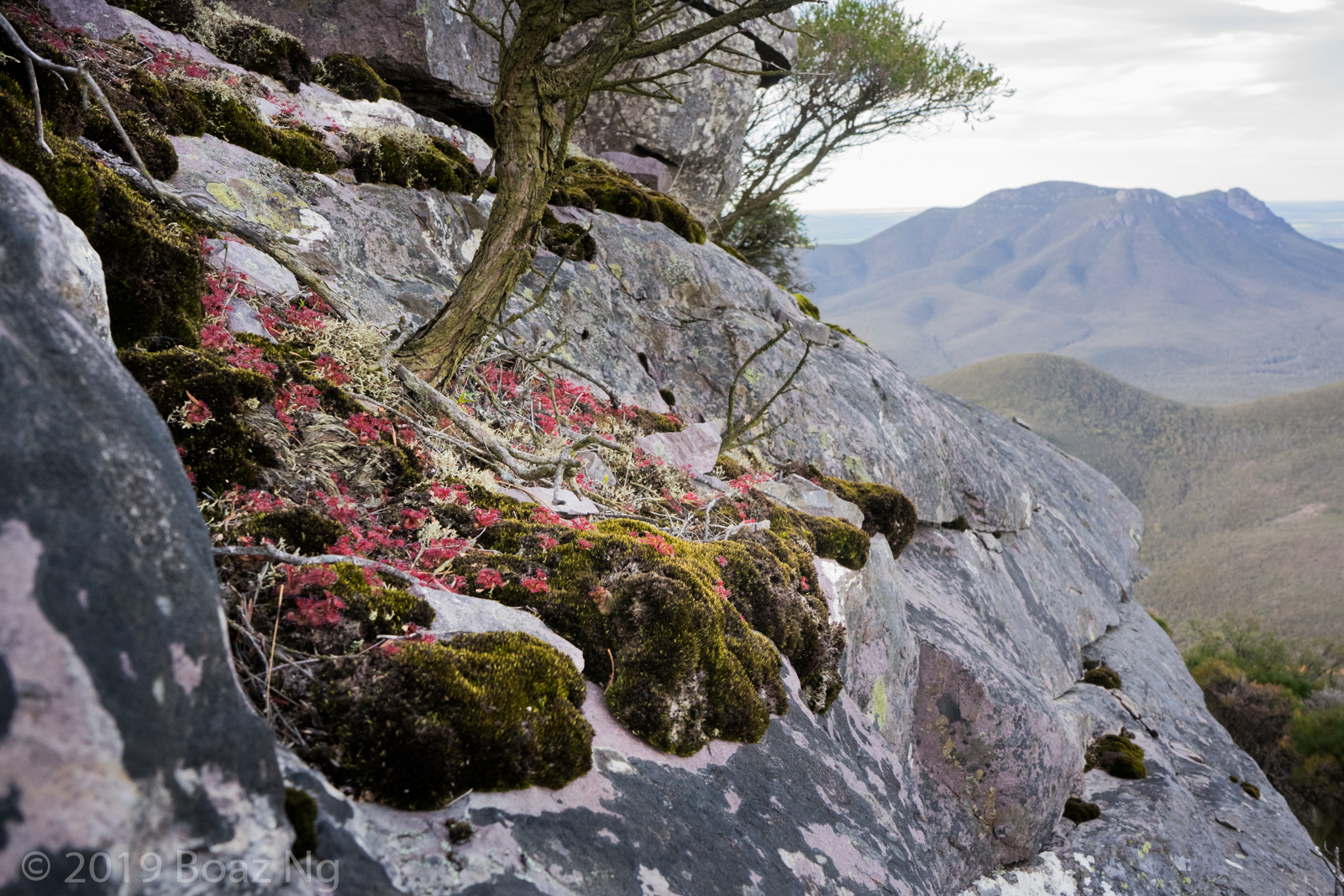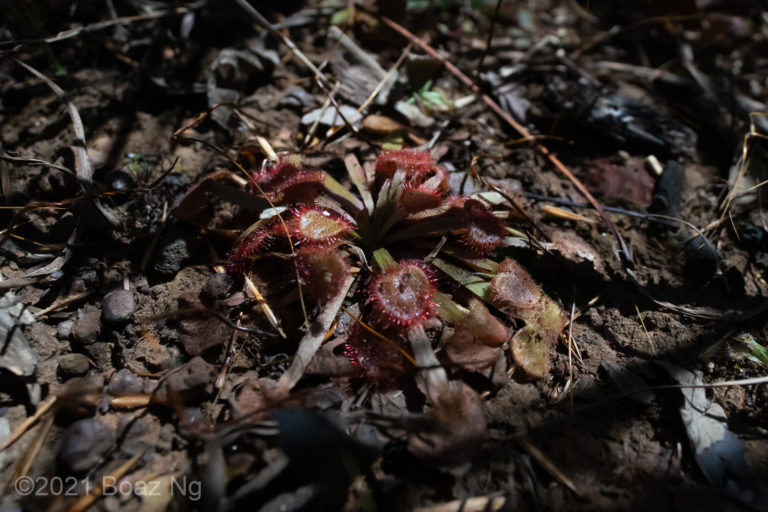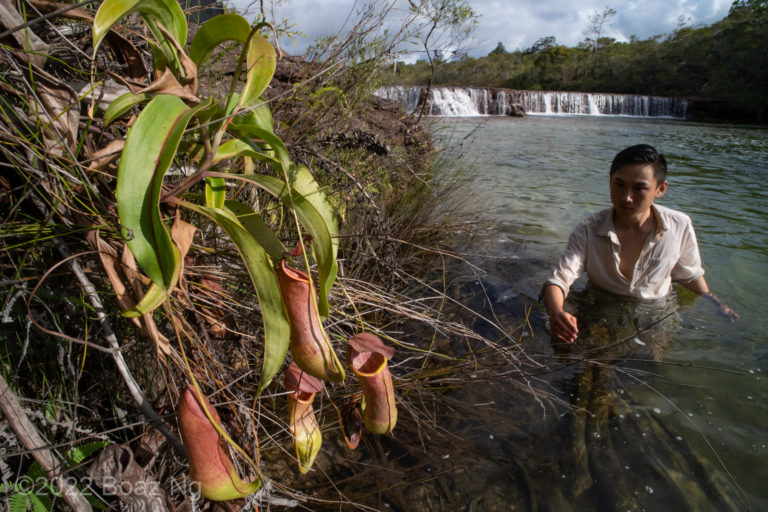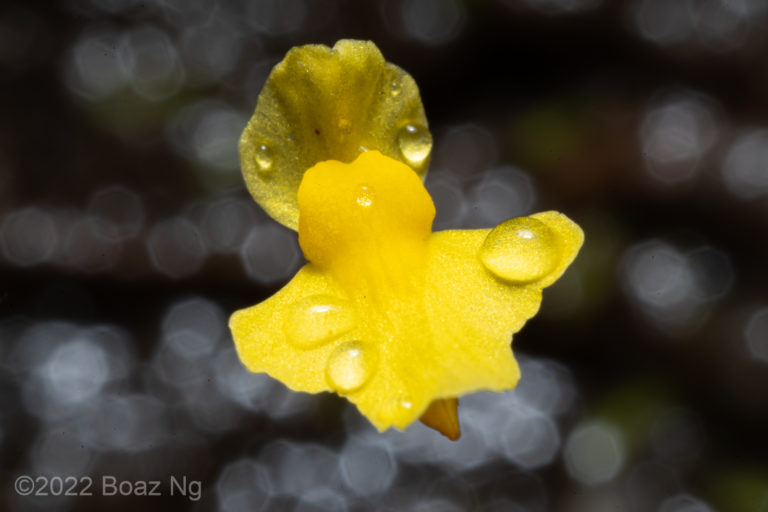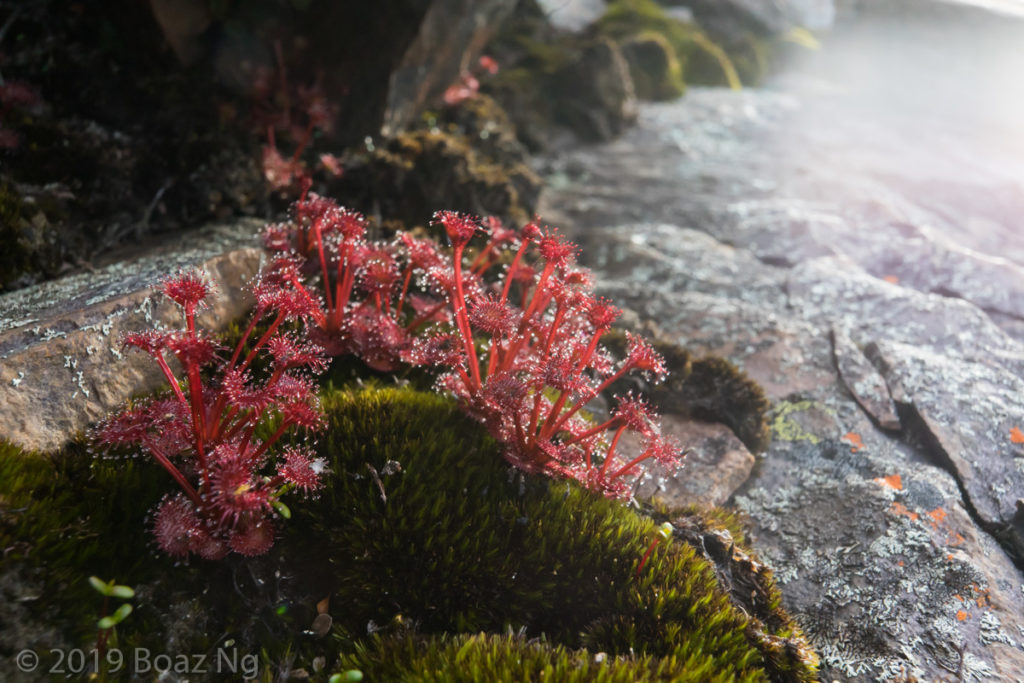
Drosera monticola grows only on the highest peaks of the Stirling Range in Western Australia. A member of the Stolonifera complex, the species is characterised by red fan-shaped leaves that emerge from a central rosette. The petioles are long and tend to extend straight from the rosette, although a short stem may grow in flowering specimens. It is most similar in morphology to Drosera purpurascens but differs in that it has pink flowers and does does not form a prostrate stolon at the surface of the soil (D. purpurascens and stolonifera distinctively grow along the ground once the active shoot reaches the surface, although this feature can be hard to identify in situ). The species grows above the tree line in the peaks of the Stirling Range.
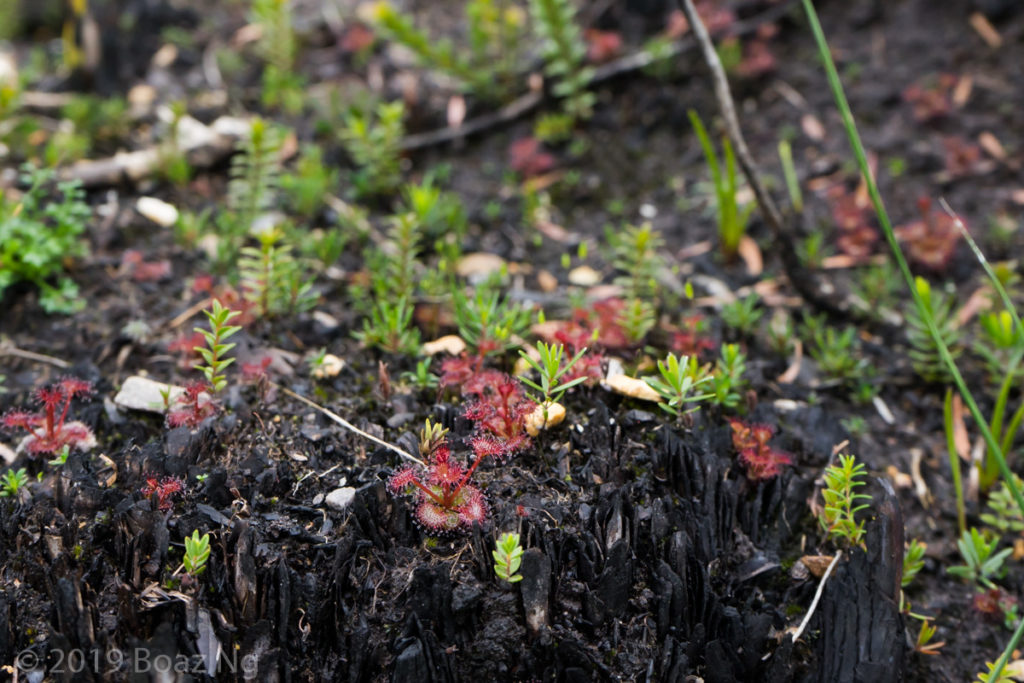
I observed the species growing in the summit plateau of Bluff Knoll, as well as the top of a neighbouring peak. On the recently burned Bluff Knoll,
the species covered the entire summit plateau, taking advantage of the exposed soils that had been cleared of the undergrowth by fire.
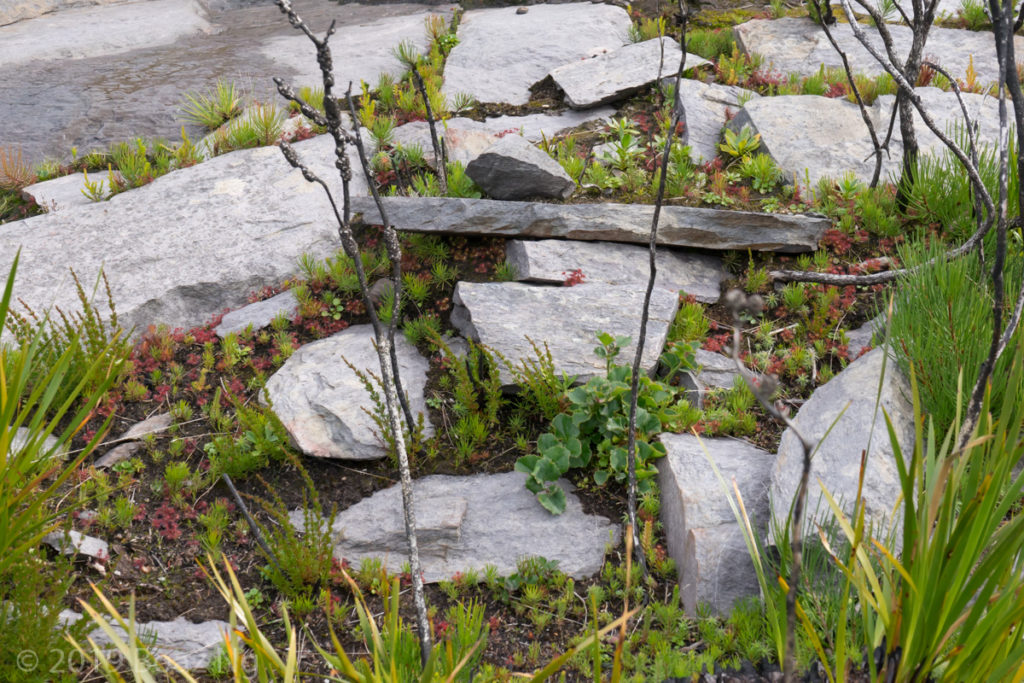
The plants inhabited the peaty soil that accumulated around the gray granite bedrock. Their red leaves could be seen emerging everywhere from the sparse undergrowth, contingent on the fact that the post-fire regrowth had only just begun.
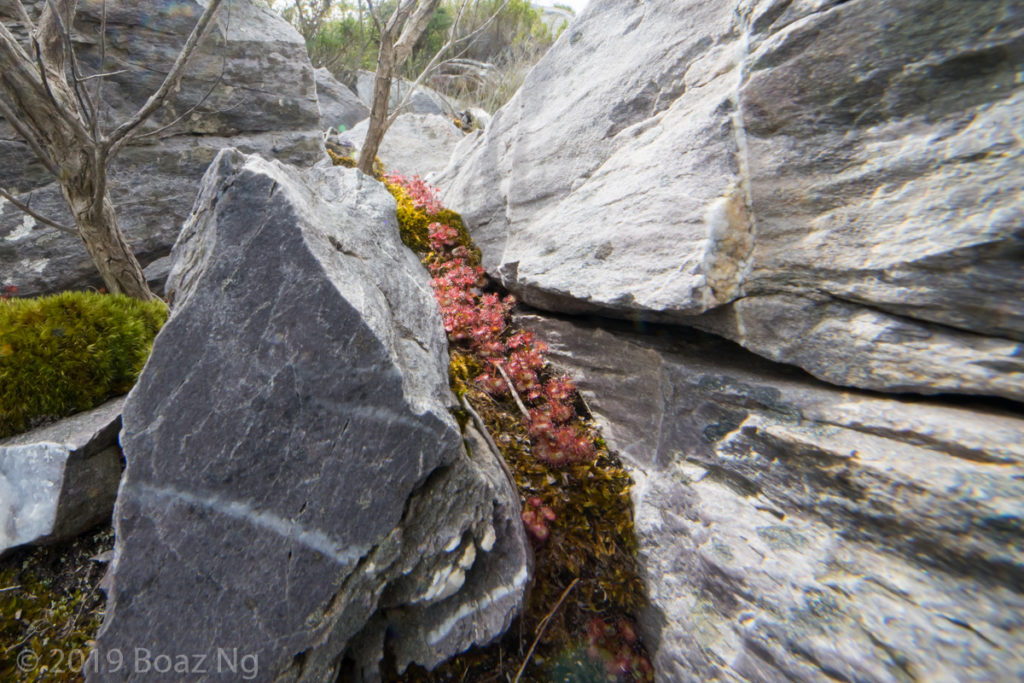
I suspect that in years between fire, the species is probably a lot less common and could lie semi-dormant or as seed. Indeed, most of plants that occupied the burnt soils were seedlings or immature specimens.
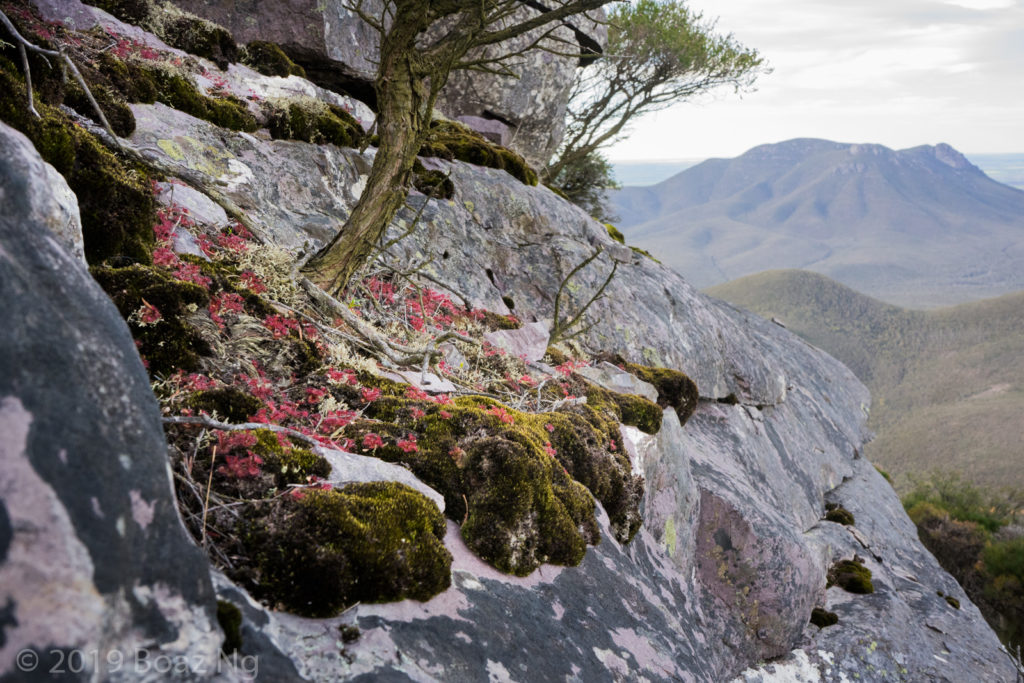
A second sighting on a neighbouring peak offered insight into how the species normally grows. Similarly to Bluff Knoll, the species only occurred at the highest elevations, where the forest gives way to exposed granite above the cloud line. Here, D. monticola grew most prominently on the moss beds that hung on the edge of the steep cliffs.

The extreme exposure of this habitat meant excluded the scrubby bush that occupied the more sheltered areas, giving the Drosera access to space and sunlight. While the occasional patch of D. monticola could be found in the bushes, these plants were not so apparent and grew poorly in comparison (of course, until they are exposed by fire). The plant is truly tough, surviving winter snow, extremely high winds and summer desiccation in its shallow moss garden.

It was a great surprise to see D. monticola on this peak, as this species has not to my knowledge been officially recorded here (at least according to what I can gleam online). Given that there are other remote peaks of similar elevations in the Stirling Range, the species probably occupies a slightly broader range than currently known.



